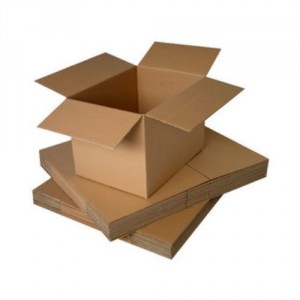 Beginning at the end of next month, both UPS and FedEx will change the way they charge for most packaging. Rather than using the traditional weight-plus-distance formula that has been in use since the 1930s, both carriers will use dimensional pricing — or “dim pricing” — to calculate how much it will cost to ship most packages.
Beginning at the end of next month, both UPS and FedEx will change the way they charge for most packaging. Rather than using the traditional weight-plus-distance formula that has been in use since the 1930s, both carriers will use dimensional pricing — or “dim pricing” — to calculate how much it will cost to ship most packages.
Dim pricing is based on a package’s measurements, rather than just its weight, and is expected to make shipping more efficient for carriers because there will be fewer less-than-full trucks. This new model favors smaller, dense packages over the type of larger, lighter packages that are commonly used by online retailers and others.
Anticipate Higher Shipping Costs
Businesses that depend on FedEx and UPS for shipping their products to customers may see much higher costs, especially those that deal in apparel, consumer packaged goods and other lightweight products. According to one estimate compiled by the Wall Street Journal, the cost of shipping an 8 lb., 32-pack of toilet paper between 601 and 1,000 miles will increase by 37%.
While the new pricing won’t go into effect until Dec. 29 — after the holiday shipping rush — to reduce your shipping costs for 2015 and beyond, it’s important that you start planning a new shipping strategy now. Here are some tips to help you out:
- Use Different Packaging — Smaller packages will cost less to ship, regardless of their weight, so many businesses are experimenting with new ways of reducing the size of their packaging while still protecting the contents, maintaining product quality, and enhancing the customer experience, such as air-filled plastic balloons and vacuum-sealed bags that reduce volume while maintaining protection.
- Find Savings Elsewhere — If there is little opportunity to reduce the size of the packages you ship — for example, if you specialize in bulky mechanical equipment or tools that must be shipped pre-assembled — you more easily absorb the higher shipping costs if you find cost-saving opportunities elsewhere, such as increasing automation and forecasting capabilities.
- Consider Using Third-Party Logistics — This dramatic change in how shipping costs are calculated may be a great opportunity for you to explore outsourcing your delivery altogether through the use of a third-party logistics partner, or 3PL. Companies that specialize in shipping often have the experience and insight to minimize your shipping costs that can more than compensate for the expense of bringing them on-board to handle your product deliveries.
- Switch to the US Postal Service — In an attempt to capture a larger market share, the US Postal Service recently announced lower rates for some types of packaging. Beginning last September, the USPS reduced rates by as much as 58% on two of its “Priority Mail” one- to -three day delivery products for high-volume customers, such as online retailers. Plus, the postal service won’t use dim pricing on its parcel shipments.
If you depend on FedEx or UPS to deliver your products to your customers, creating a comprehensive strategy to counteract the increased shipping costs associated with dim pricing now can save you money in the long term.
